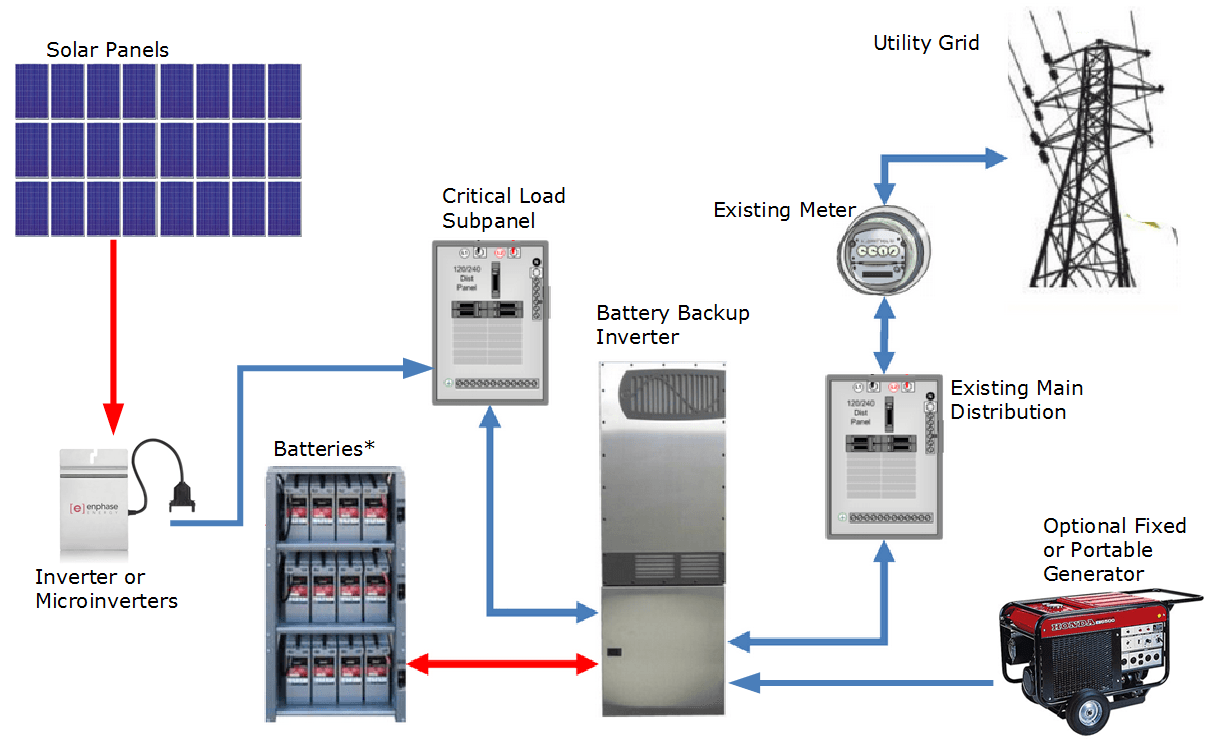
Solar System Components
There’s a number of solar components required to power your home, and others to increase your system’s value and efficiency
We’re happy to answer any questions you may have over the phone.
Or, take a minute to read the parts description below!
We know how important it is to understand your investment.
Itemized Parts Description
PV Modules
Commonly called “solar panels”, a photovoltaic (PV) module is a device that converts sunlight into electricity using photovoltaic cells. PV cells are made of materials that produce excited electrons when exposed to light. The electrons flow through a circuit and produce direct current electricity, which can be used to power various devices or be stored in batteries.
Inverter
An inverter converts DC output into AC that can be used to power your home, fed into a commercial electrical grid or stored in a battery. Solar power inverters have special functions adapted for use with photovoltaic arrays, including maximum power point tracking and anti-islanding protection.
Micro-inverters are smaller units attached one per PV module. These allow for optimization and to increase the size of your system in the future.
A string-inverter is a single unit that ties your entire array of PV modules into one location. String inverters offer better compatibility with batteries and are generally a more cost-effective solution.
Charge Controller
A charge controller supplies electricity to devices or batteries from your PV array. They can charge lead acid or Ni-Cd battery banks up to 48 V and hundreds of ampere hours (up to 4000 Ah) capacity. Most inverters used in residential systems have a charge controller built into them.
Rapid Shutdown Devices
The California state law requires all roof-mounted residential PV arrays to be equipped with Rapid Shutdown Devices to ensure the safety of first responding public utility workers in the event of a blackout. These are small devices mounted to each individual PV module.
Power Optimizers
Typically smaller devices mounted to each individual PV module, optimizers are optional system components that maximize a string inverter system’s efficiency. They do this by individually tuning the performance of the panel or wind turbine through maximum power point tracking, and optionally tuning the output to match the performance of the string inverter (DC to AC inverter). Said simply, without optimizers a string system will only function at the capacity of the weakest link, so if there’s a shading issue or a panel goes down, well… you’re in for some trouble.
Subpanel
While a main electrical panel is directly connected to the power grid, a subpanel acts as a waypoint between the main service panel and the PV power output from the inverter. Some solar customers will utilize the subpanel to supply power only to their “critical loads”, appliances specifically designated to be powered by solar.
Solar Battery
Of course, you know what a battery is. What you may not know is that batteries dramatically increase the value of your system’s output. This is because any excess energy your system produces during the day can be stored on a battery for you to use in the evening or in the event of a blackout. Without a battery, your excess energy production goes back to the power company who offers you a credit for a small fraction of the value.
Generator
While a generator is not technically a solar system component, it can be wired through your inverter to work seamlessly with your solar system to back up your home. We can configure your inverter with an automatic transfer switch to fire up your generator when needed, and with some inverters you can direct the generator to supply power to your batteries.

